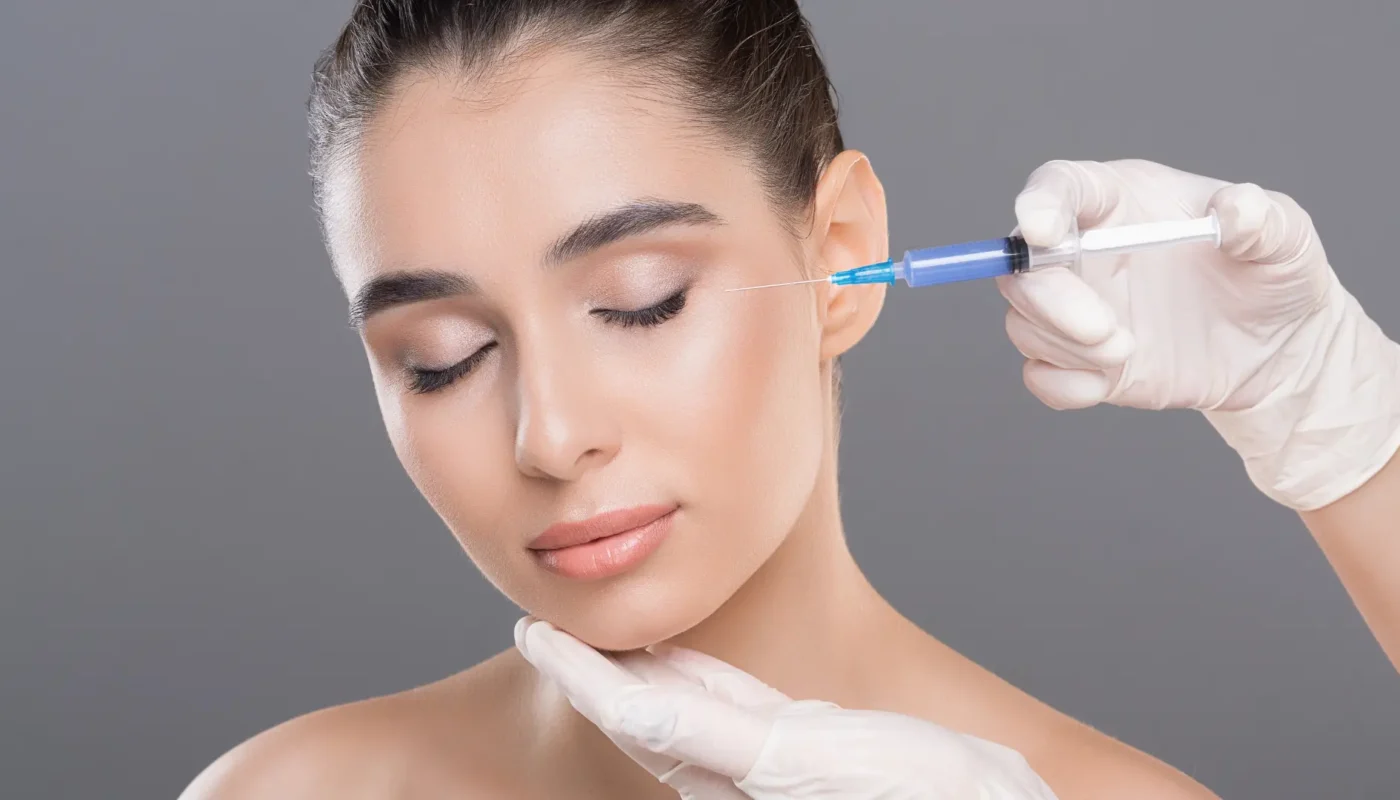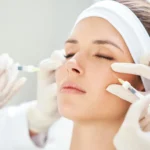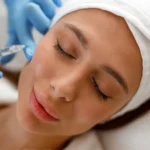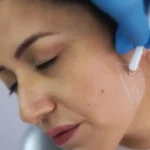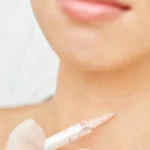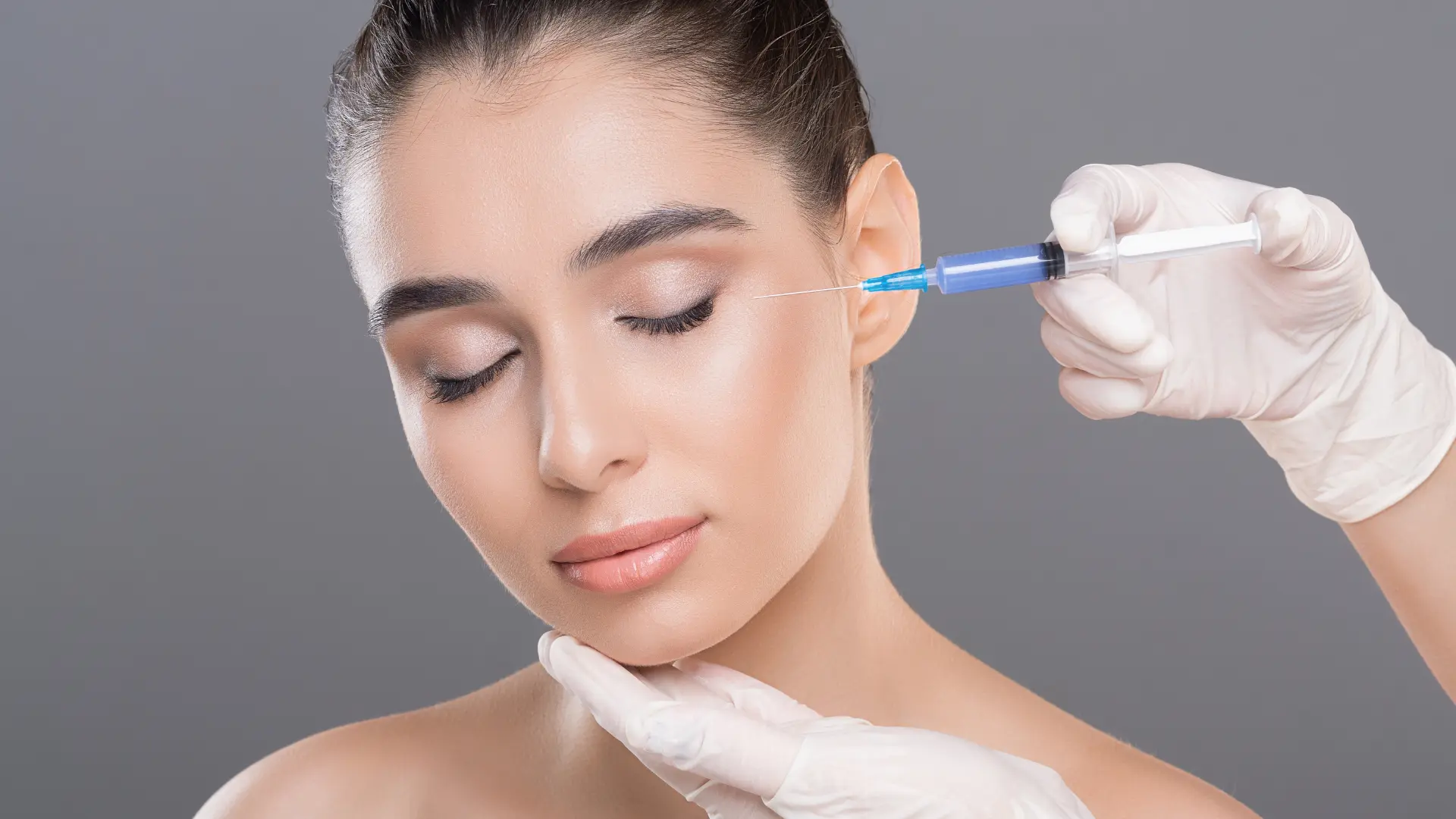
Did you know 95% of patients reported improved skin glow two years after their Sculptra treatment? This statistic underscores the long-term satisfaction and efficacy of Sculptra in aesthetic procedures, reflecting its ability to enhance and sustain a youthful and radiant complexion over time.
Sculptra works beneath the skin to deliver treated patients a smooth and youthful appearance. All Sculptra ingredients are designed to address these facial aging signs. To ensure safety and maximize benefits, individuals should ask their trusted aesthetic provider for guidance in administering this poly-L-lactic acid injection.
This article will explore Sculptra’s active ingredient, how PLLA works, its benefits for aesthetic treatments, and standard dosing information.
Key Takeaways
- This PLLA dermal filler initiates collagen synthesis and differentiates itself from other dermal fillers like hyaluronic acid.
- Aesthetic providers typically administer Sculptra for nasolabial folds, cheekbones, and other facial regions through a series of treatment sessions.
- Providers can tailor the dosage for specific patient characteristics, aligning it with patient profiles and aesthetic desires.
- A 12-month study highlighted high patient satisfaction, including improved skin radiance, sagging, firmness, and natural-looking results.
About: Medica Depot is your trusted all-in-one supplier, offering a range of high-quality medical injectables and supplies. Buy Sculptra at Medica Depot today! Whether for health professionals, plastic surgeons, dermatologists, licensed estheticians, or other specialists, we can offer genuine, brand-name products you may need. With Medica Depot, we prioritize serving you better to improve the patient’s quality of life.
The Key Ingredient in Sculptra

Sculptra capitalizes on the potency of poly-L-lactic acid (PLLA) in its injectables. The formulation utilizes this biocompatible and biodegradable synthetic substance to stimulate the skin’s natural collagen production. When aesthetic providers administer Sculptra, the skin absorbs the PLLA microparticles to stimulate collagen and help restore the skin’s inner structure and quality.
This PLLA dermal filler initiates collagen synthesis and differentiates itself from other dermal fillers like hyaluronic acid. Instead of providing quick and immediate results, PLLA injectables gradually improve skin texture and volume while addressing the skin’s foundation. It targets the skin’s deep layers and collagen production for more effective and longer-lasting results.
PLLA injectables can offer various benefits to individuals planning to address their skin concerns. Sculptra has approved indications for the facial region and can provide safe and effective outcomes.
- Restores Facial Volume
- Reduces Appearance of Facial Fine Lines, Wrinkles, and Other Signs of Aging
- Improves Skin Firmness and Elasticity
- Delivers Facial Skin Rejuvenation
- Minimal Downtime and Quick Procedure
- Natural-Looking and Longer-Lasting Treatment Outcomes
Standard Dosage Recommendations for Sculptra
Aesthetic providers typically administer Sculptra for nasolabial folds, cheekbones, and other facial regions through treatment sessions. Depending on the treatment plan, each session involves multiple tiny injections. The typical dosage per session ranges from one to two vials, adjusted to the patient’s needs and treatment area.
According to Sculptra’s Frequently Asked Questions, on average, patients must have two to three treatment sessions spaced for three to four weeks. The number of injections at each session will vary based on the treatment plan determined by patients and aesthetic professionals.
A personalized approach ensures optimal results. Providers understand that several factors can influence the standard dosage of Sculptra. However, despite the adjusting dosage, providers must administer the shots using the proper Sculptra injection technique and treatment protocol.
- Age
- Skin Type and Quality
- Degree of Volume Loss
- Severity of Facial Skin Concern
- Treatment Area
- Desired Aesthetic Goals
Adjusting Sculptra Dosage for Different Treatment Areas
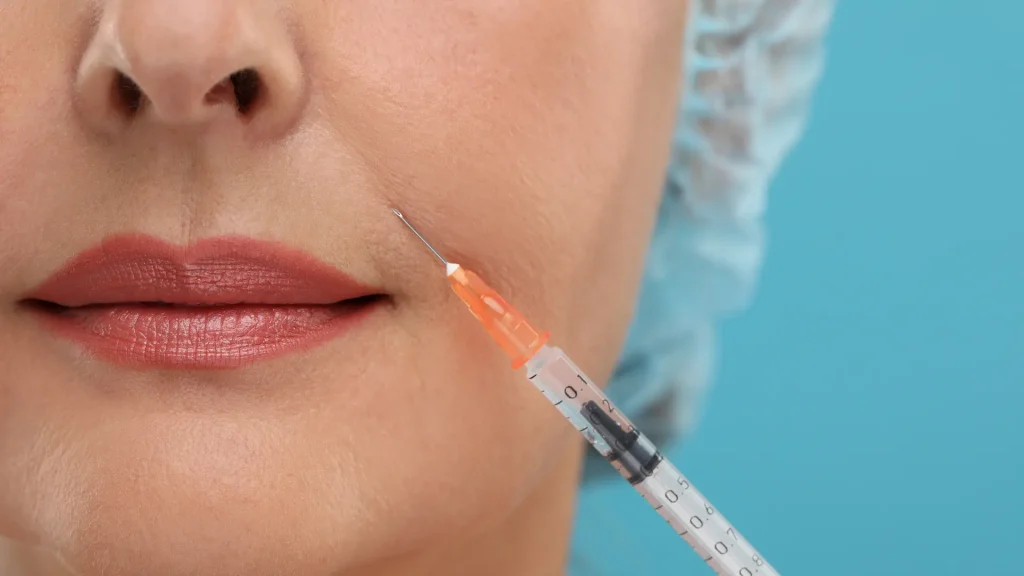
Aesthetic providers can adjust the Sculptra dosage based on the specific treatment area’s needs and the patient’s concerns. It’s important to remember that larger regions or those with significant volume loss may require more Sculptra injection and dosage.
- Dosage Adjustments for Facial Volume Restoration: To restore individuals’ facial volume, especially in the cheek region, injection treatment may require a higher dosage to achieve the desired contour and fullness.
- Dosage Considerations for Treating Wrinkles and Folds: When targeting wrinkles and folds, such as Sculptra for nasolabial folds, injection administration and precision are critical. Smaller, more focused amounts are required to ensure natural-looking skin smoothing.
Individualizing Sculptra Dosage Based on Patient Needs

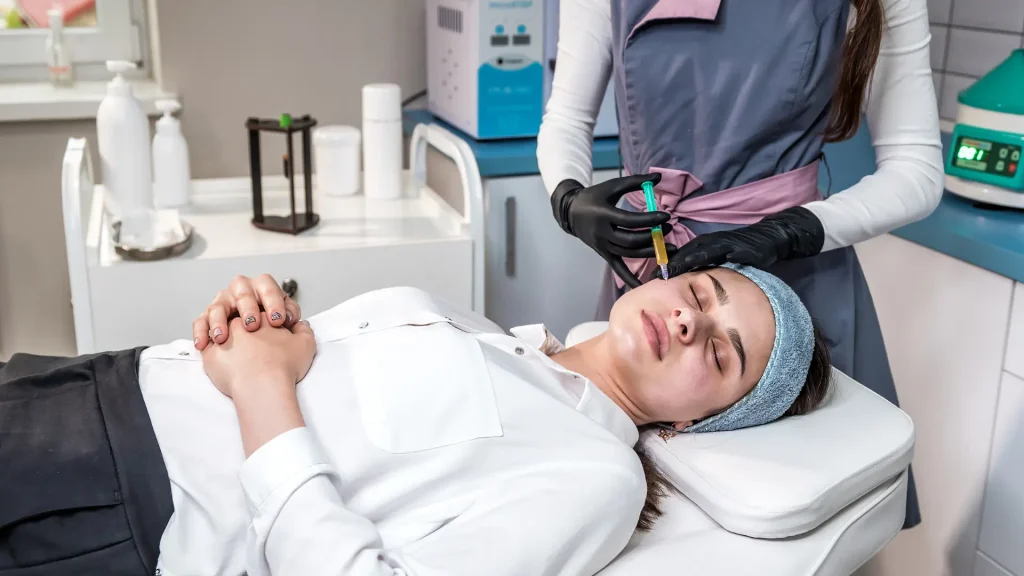
Patients can benefit from Sculptra with the help of an aesthetic professional’s expertise. A thorough consultation and evaluation with an aesthetic expert before the procedure allows them to create a tailored treatment plan for patients, considering their medical history, previous aesthetic treatments, aesthetic goals, and health status.
Personalizing Sculptra treatments can ensure patient safety and smooth recovery for optimal outcomes. Furthermore, providers can tailor the dosage for specific patient characteristics, aligning it with patient profiles and aesthetic desires. Sculptra dosage needs customization because of several factors, such as:
- Facial Structure
- Skin Thickness
- Previous Cosmetic Procedures
Aesthetic providers may also consider a patient’s age, skin condition, and treatment goals to ensure they benefit from the treatment and ensure harmonious enhancements. Factors like age-related collagen loss, skin elasticity, and rejuvenation goals can guide the Sculptra dosage to deliver age-appropriate and natural-looking outcomes.
Clinical Studies and Expert Guidelines for Sculptra Dosing
While clinical studies specifically addressing Sculptra dosing are unavailable online, many clinical research studies have reviewed the safety and efficacy of Sculptra injections. A 12-month study revealed that over 84% of patients desired Sculptra repeat treatments. It also highlighted high patient satisfaction, including improvements in skin radiance, sagging, firmness, and natural-looking results.
Clinical studies conducted by the US Food and Drug Administration demonstrated the safety and effectiveness of Sculptra injections in addressing facial concerns, specifically in the cheek region, volume loss, and signs of aging. The side effects that occur in most patients are manageable, and the treatment remains safe and effective for them.
Experts may advocate a conservative approach, gradually increasing dosage across sessions to achieve subtle, natural-looking enhancements while monitoring patient outcomes. However, Sculptra dosing depends on the patient and provider’s discussion of the treatment procedure and the patient’s characteristics.
Conclusion
Sculptra’s active ingredient, poly-L-lactic acid (PLLA), is renowned for its collagen-stimulating properties. The standard dosing of Sculptra is meticulously crafted, with recommendations rooted in clinical evidence and expert recommendations. It ensures a balance between efficacy and patient safety, with adjustments made for various treatment areas to achieve desired outcomes.
Tailoring Sculptra dosages to individual patient needs, considering age, skin condition, and aesthetic goals, is essential for optimal treatment. Clinical studies and expert guidelines demonstrated the efficacy and safety of Sculptra to practitioners, guiding them toward optimal dosing strategies that aid each patient’s journey in skin rejuvenation.
FAQs
1. What is the critical ingredient in Sculptra, and how does it work?
Sculptra’s key ingredient is poly-L-lactic acid (PLLA), which stimulates natural collagen production to restore the skin’s structure and quality over time.
2. What are the standard dosage recommendations for Sculptra treatments?
A typical Sculptra treatment involves multiple tiny injections, with the dosage per session ranging from one to two vials, adjusted to the patient’s needs and treatment area.
3. How can Sculptra dosage be adjusted for treatment areas or patient needs?
Sculptra dosage can be personalized based on age, skin type, volume loss, treatment area, and desired aesthetic goals. Providers tailor the dosage to achieve optimal and natural-looking outcomes.
References
- Discover Sculptra® | Restore Your Natural Collagen. (n.d.). Www.sculptrausa.com. Retrieved June 19, 2024, from https://www.sculptrausa.com/discover-sculptra
- Fabi, S., Hamilton, T., LaTowsky, B., Kazin, R., Marcus, K., Mayoral, F., Joseph, J., Hooper, D., Shridharani, S., Hicks, J., Brasater, D., Weinberg, F., & Prygova, I. (2024). Effectiveness and Safety of Sculptra Poly-L-Lactic Acid Injectable Implant in the Correction of Cheek Wrinkles. Journal of drugs in dermatology: JDD, 23(1), 1297–1305. https://doi.org/10.36849/JDD.7729
Clinical aesthetics products refer to a category of products used in the field of medical aesthetics or cosmetic dermatology. These products are typically designed and formulated to be used under the supervision of healthcare professionals, such as dermatologists, plastic surgeons, or trained aestheticians. They are distinct from over-the-counter cosmetics in that they often contain active ingredients or formulations that require expertise in their application or administration.
Examples of clinical aesthetics products include:
-
Dermal Fillers: Injectable substances used to add volume, smooth wrinkles, and enhance facial contours. Examples include hyaluronic acid fillers like Juvederm and Restylane.
-
Botulinum Toxin (Botox): Injectables that temporarily paralyze facial muscles to reduce the appearance of wrinkles caused by repetitive movements, such as frown lines and crow's feet.
-
Chemical Peels: Solutions applied to the skin to exfoliate and improve its texture. They can treat acne, pigmentation issues, and signs of aging.
-
Laser and Light Therapies: Devices that emit focused light or laser energy to treat various skin conditions, including acne, scars, and signs of aging.
-
Prescription Skincare Products: Formulations containing active ingredients like retinoids (vitamin A derivatives), hydroquinone, or prescription-strength antioxidants to address specific skin concerns under medical supervision.


